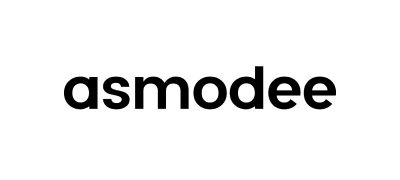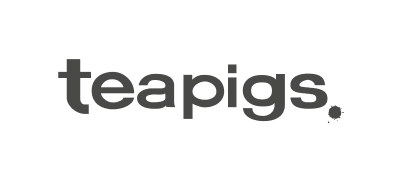Guest Post by Swanky
B2B customers are increasingly looking for an easy, flexible eCommerce experience that reflects a typical D2C customer journey. Swanky, a Shopify Plus agency, have shared key insights into optimising your Shopify B2B store by applying B2B eCommerce best practices. Swanky have launched and grown more than 100 stores on the Shopify platform over the past 14 years, and we’re excited to share their expertise…
Differences between D2C and B2B customers
The fundamentals of B2B eCommerce UX design do not vary widely from those of your D2C store, so you’ll want your website to be intuitive and easy to navigate. Content should be clear and informative and lead the customer through the purchasing journey with as few friction points as possible.
However, whilst many elements of D2C and B2B eCommerce best practices are similar, D2C and wholesale buyers are very different and, therefore, have distinct needs. Consider these differences:
- Sales cycle: Whilst the D2C sales cycle is generally very short, B2B sales cycles tend to be much longer, with big orders taking many weeks or months to agree in certain industries. Impulse purchasing will therefore be less of a factor to consider when designing an eCommerce experience for your wholesale buyers.
- Number of buyers: D2C sales deal directly with an individual customer, whereas a B2B sale will often involve multiple decision-makers on the customer side, adding increased layers of complexity. Each customer account will have multiple users accessing different information, and they may want to vary permissions between members of the team or based on seniority levels.
- Multi-location: Larger wholesale customers may have multiple locations, each with unique requirements, varying budgets, and access to different products. You’ll need to provide a way for these customers to manage the needs of all their locations from one company account.
- Purchase costs: D2C eCommerce typically represents low-cost, minimal-risk purchases. Customers can make impulse decisions and rely on a return or refund if they make a mistake. In contrast, B2B customer orders may amount to hundreds of thousands of dollars or more, with any errors causing massive consequences in terms of revenue and profit.
Optimise your Shopify store with Swanky and SparkLayer
With these key differences in mind, let’s take a look at best practices for your Shopify B2B eCommerce store.
1. Reflect the D2C experience
Since most B2B customers are also D2C customers in their private lives, they’re used to the ease and speed of D2C eCommerce. Increasingly, therefore, wholesale customers are looking for the same quality in their B2B customer experience. Despite the differences in their buying processes, B2B customers want the ease and enjoyment of a D2C store whilst still having access to more complex functionality. No mean feat!
Focus on designing an intuitive and seamless purchasing journey and review performance regularly, identify friction points where customers tend to abandon carts, and test optimisations to increase conversion rates. Ensure you prioritise fast loading speeds and responsive design as customers will often use tablets and mobile devices to browse.
Consider the tone of voice you want for your store. In a professional context, you may want to address your customers with a more formal, less playful tone of voice. The same tone of voice that you use for your D2C customers may well feel out of place in a professional context. So, whilst you may wish to keep much of the customer interface similar, ensure you match your tone of voice to your audience.
2. Provide custom payment terms
You’re unlikely to want all your wholesale customers to start on the same payment terms, so building custom payment terms into your B2B storefront will be a priority. As well as multiple payment options and individualised price lists, you may give newer customers a shorter payment deadline or offer store credit to established customers.
Swanky built a custom credit solution for leading pet food brand Natural Instinct when they migrated their B2B store from Magento to Shopify. This bespoke functionality allows customers to have a line of credit that can be used with net payments. It also flags to Natural Instinct any customers that have 20% or less credit remaining so that their team can review these accounts.
3. Design personalised dashboards
Make your B2B customers feel valued by designing a personalised account page that is tailored to their needs. Here, they can review past orders, download brochures and specifications, and filter by branch location. Wholesale customers often have several buyers and even multiple locations attached to each account, so it’s important that each stakeholder can log in and easily locate orders made to their particular branch. With Sparklayer, you can allow companies to create ‘teams’ to share activities such as placing orders, creating shopping lists, and managing orders. Some clients will want to restrict access for certain members of their team who may only be able to view orders from their own location or may have access to a restricted product catalogue. Providing this level of personalisation helps customers feel understood and buy in a way that best suits their needs.
4. Facilitate easy ordering and reordering
Time-saving is one of the great advantages of eCommerce, allowing customers to repeat routine orders regularly without additional work for your Sales reps.
Having a ‘Buy Again’ button on the order history page will allow customers to immediately duplicate past orders and reorder in just a few clicks. This creates a simple, fluid experience for regular customers.
In addition, you can create draft orders based on any orders that stockists send directly to your Sales team via phone or email. Once created, the draft order will automatically display the pricing, payment terms, and checkout options saved to the customer’s account. Then, when they are ready to place the order, they can do so quickly and easily.
5. Optimise B2B eCommerce UX for product pages
With far more riding on a wholesale purchase than a D2C purchase, wholesale customers will generally want to do more pre-purchase research than a typical D2C customer.
Consider how you can add confidence by providing additional information to your product pages. Include detailed technical specifications and allow customers to download manuals, certifications, and data sheets. They can then conduct thorough research on the products they purchase and have access to information that they can pass on to their own customers.
You’ll also want to add bulk order functionality to your product pages. Avoid frustration by adding a dropdown menu so customers can select the order amount rather than repeatedly clicking the ‘Add’ button. You can set the order amount to increase in specific increments to ensure that wholesale customers order in full pack sizes and can also set minimum order amounts or values for each product.
6.Enable a self-service approach
B2B eCommerce can greatly reduce the load for your Sales team, and you can benefit even further by empowering your customers to find the information they need at their fingertips by offering the following:
- FAQs: Since your stockists’ frequently asked questions, or certainly the answers to them, will differ greatly from those of your D2C clients, you’ll want to dedicate time to addressing these as thoroughly as possible on your wholesale website. Why not upgrade the standard FAQ page to an online knowledge base where stockists can get access to all the information they need?
- Downloadable information: When Swanky helped Saddleback create an award-winning B2B eCommerce site on Shopify Plus, they built a range of custom features to enhance their B2B customer experience. In addition to facilitating access to important, decision-making information, this also plays into customers’ desire for a tailored, relevant experience.
- Chatbots: Having a chatbot on your wholesale website will enable customers to get specific responses to a range of questions that might be impacting their purchase decision. If their question cannot be easily answered, you can connect the buyer to a member of your Customer Service team who can provide personalised support as needed to ensure excellent customer service.
Roundup
Swanky has a wealth of experience supporting brands with B2B eCommerce builds on Shopify Plus, helping them benefit from the simplicity and cost savings of managing a hybrid store from one platform. Get in touch with their team of experts for more information! We shared our own insights into B2B eCommerce, which you can find on Swanky’s website.
















